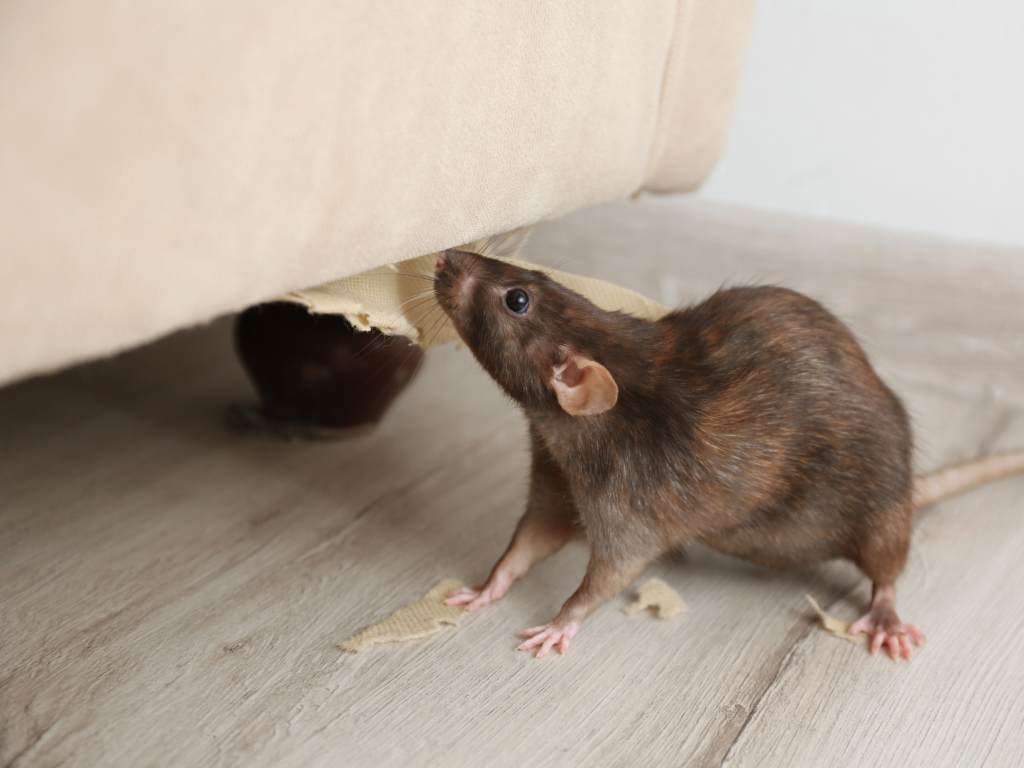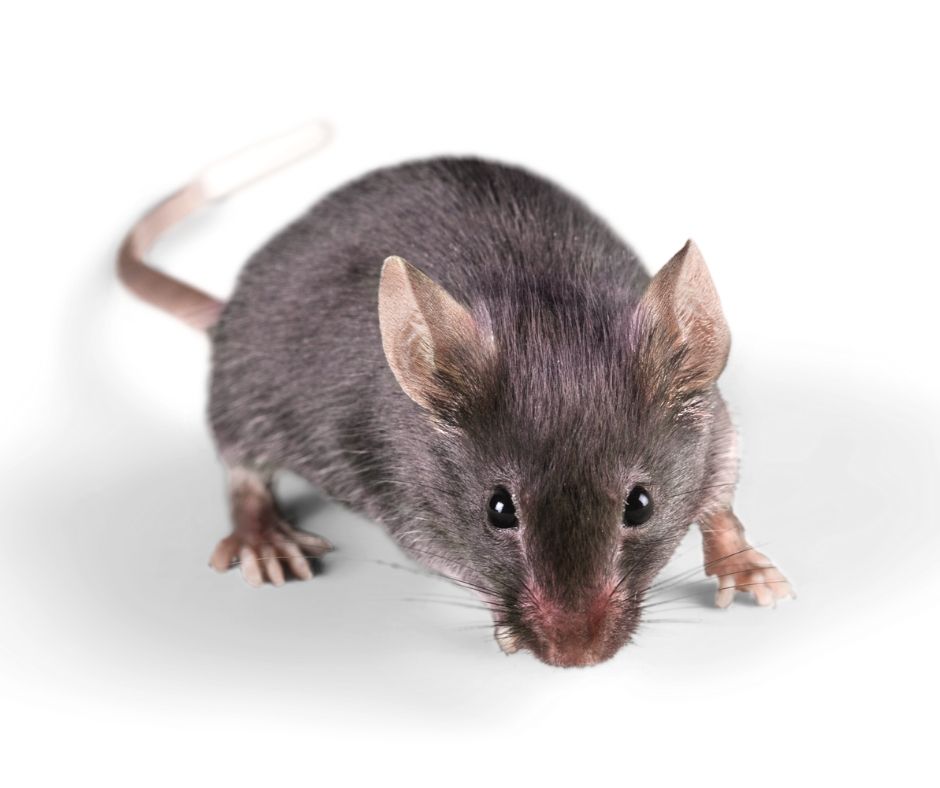Rodent Treatments in Florida
xterminator Services for Clearwater, Clearwater Beach, Largo, and Belleair Beach
Florida’s subtropical environment, featuring mild winters, humidity, and easy access to food and water sources, offers year-round opportunities for rodents to prosper. Whether it is mice sneaking into kitchens or rats foraging in yards, once they establish nests in your property, they can rapidly multiply, gnaw on wiring, and spread contamination. In Clearwater, Clearwater Beach, Largo, or Belleair Beach, overlooking early signs of rodent intrusion sets the stage for a full-blown infestation that demands more complex remediation. This service page underscores how rodents adapt so well to Florida’s conditions, the clues suggesting their presence, and why joining forces with a professional rodent exterminator for reliable rodent treatments can restore peace of mind. By reacting quickly and methodically, property owners safeguard their environment and prevent further damage or health concerns.
Why Rodents Thrive in Florida
- Mild Winter Temperatures
In cooler climates, frigid winters naturally stunt rodent breeding, limiting population booms until spring. By contrast, Florida’s winter seldom reaches extended freezing temperatures, so rats and mice remain active virtually all year. Indoors, consistent heating or air conditioning ensures rodents never face harsh conditions that might slow their life cycle. - Frequent Rainfall and Humidity
Rodents require water as much as they need food. Florida’s rainfall and moisture-laden air generate damp soils, condensation near air-conditioning units, and potential leaks under sinks or basements, all of which can sustain rodent populations. If heavy rain inundates yard burrows, rodents move indoors in search of dry spaces. - Abundant Food Sources
Rodents scavenge leftovers, unsealed grains, or garbage. Busy neighborhoods and tourist-friendly areas, like Clearwater Beach, produce leftover scraps, overfilled trash bins, or spillage in outdoor dining spots. A single open bin or a few dropped pieces of food can sustain multiple mice or rats. - Minimal Seasonal Dormancy
In northern areas, rodents endure forced slowdowns amid freezing winters. In southwestern Florida, no such extensive dormancy occurs, so mice or rats that infiltrate a property can breed multiple times a year if undetected. A minor infiltration quickly balloons into a larger infestation across multiple rooms. - High Occupant Mobility
With seasonal guests, short-term rentals, and frequent relocations in places like Largo or Belleair Beach, rodents may hitch rides in moving boxes, stored vehicles, or shipping goods. Once they locate a consistent water source and hidden corners indoors, they remain until forced out by occupant action or extermination.

Indicators of a Rodent Infestation
- Droppings
Rodent droppings differ by species but often appear as small, dark pellets—rice-shaped for mice, larger and capsule-like for rats. Discovering droppings in cupboards, along baseboards, or near pantries signals rodent presence. Fresh droppings are moist; older ones become dusty or grayer. - Nocturnal Noises
Mice and rats move primarily at night. Hearing soft scratching, rustling, or gnawing sounds from attic corners, basement floors, or within walls after dark strongly implies rodents rummaging for food or nest materials. - Gnaw Marks and Holes
Rodents chew constantly to manage their growing incisors. Inspect cables, wood edges, or plastic containers for bite marks. Small holes in cereal boxes or dog food bags also confirm that rodents feed there. Sharp or ragged edges might appear near openings they use to slip through. - Nests of Shredded Material
Rodents build nests from paper, cloth, or fibrous scraps. These clusters often hide in dim corners—like rarely accessed closets, garages, or beneath cabinets. Accompanied by droppings, leftover seeds, or gnaw marks, nests reveal the presence of a breeding population. - Unusual Pet Behavior
Dogs or cats might stare at empty walls, sniff corners intently, or paw at closed cupboards if they hear or smell rodents. Observing your pet fixated on certain spots can guide you to dropping-laden corners or hidden mouse runs.
Risks of Untreated Rodents
- Disease and Contamination
Rats and mice can carry parasites or bacteria, transmitting them onto surfaces or pantry goods through droppings or urine. Prolonged rodent presence may escalate health hazards for households, including the possibility of Hantavirus or salmonella contamination. - Infrastructure Damage
Gnawing on wood beams, wiring, or insulation, rodents compromise structural integrity and heighten the risk of electrical fires if cables are exposed. Over weeks or months, these hidden chew marks accumulate, leading to costly repairs or compromised building safety. - Rapid Population Growth
A pair of rodents reproduces multiple times a year, quickly turning a negligible infiltration into a widespread infestation. Left unchecked, mice or rats can move from kitchens to multiple floors or along walls in multi-unit buildings, creating more extensive infiltration that costs more time and effort to clear. - Daily Stress
Living with roaches can be unsettling, but rodents often inflict greater anxiety since they scuttle across floors or rummage in pantries at night. Occupants may lose sleep, fear hidden droppings in utensils, or worry about potential disease exposure.
Why Enlisting a Professional Exterminator Is Vital
- Accurate Problem Diagnosis
A trained exterminator identifies whether the issue involves house mice, roof rats, or other rodent species. Each type has unique nesting patterns and hiding spots. Recognizing the correct species shapes the strategy—such as placing traps near attics for roof rats or behind stoves for mice. - Comprehensive Elimination Tactics
Experts integrate traps (snap traps, multi-catch devices) with tamper-resistant bait stations, ensuring rodents encounter lethal solutions whether they nest under floors or behind walls. Furthermore, occupant education—like clearing clutter or sealing food—complements exterminator methods. - Limited Chemical Exposure
Overusing store-bought poisons can endanger children or pets while sometimes only partially affecting rodents that remain hidden. Professionals tailor rodenticide placements, using enclosed or properly located stations that pose minimal risk to non-target animals while ensuring thorough rodent contact. - Exclusion and Sealing
Since rodents can squeeze through quarter-inch gaps, exterminators often propose sealing cracks or installing door sweeps. Without closing those entry points, new rodents can easily replace the ones removed. Proactive sealing plus occupant housekeeping forms a durable defense. - Monitoring and Follow-Up
Because rodents breed quickly, verifying that newly born pups do not re-infest remains essential. Scheduling re-checks or occupant-based trap monitoring helps confirm the elimination. If fresh droppings appear, additional spot treatments finalize the job before rodents re-establish.

Rodent Treatments Professionals Might Use
- Initial Inspection
The exterminator carefully scans around kitchens, basements, attics, or yard perimeters for droppings, gnaw marks, or nesting debris. This thorough mapping clarifies the infestation’s scope, guiding trap or bait station placement. - Trapping Indoors
Snap traps or multi-catch traps, aligned with walls or near droppings, catch rodents following their usual runways. Baiting them properly (with nut butter, seeds, or pet kibble) lures mice or rats out of hiding. Regular checking of traps ensures quick removal of captured rodents and tracks rodent progress. - Rodenticides in Bait Stations
If roaches or direct visual sightings show heavy rodent populations, enclosed bait stations containing rodenticide might be strategically placed indoors or outdoors. Rodents feed inside these stations, then carry the poison back to nests. This approach quietly addresses entire colonies behind walls or under floors. - Sealing Entry Points
Even the best removal fails if new rodents slip back inside. Professionals might recommend steel wool or metal flashing around pipe entries, improved door sweeps, or patched foundation cracks. Occupant cooperation ensures rodents find no re-entry routes once existing ones are blocked. - Hygiene and Sanitation Upgrades
Promptly discarding garbage, storing cereals in airtight containers, and cleaning dishes after each meal reduce leftover scraps that attract rodents. For yards, removing debris piles or standing water eliminates nesting or watering spots. This occupant-driven synergy significantly lowers rodent re-infestation chances.
Serving Clearwater, Clearwater Beach, Largo, and Belleair Beach
Clearwater: Renowned for a lively downtown and close-knit neighborhoods, Clearwater sees a blend of older homes and new developments. Mice or rats exploit cracks in older foundations or rummage through loosely sealed trash if occupant vigilance slips. Swift occupant action plus integrated rodent treatments hamper rodent colonization.
Clearwater Beach: A tourist hotspot featuring short-term rentals, hotels, and restaurants. Rodents might slip in through frequent deliveries, occupant transitions, or leftover food scraps in open dumpsters. Swift occupant training—like improved waste management—and professional sealing or trap placement provide substantial protection.
Largo: A suburban area with both established properties and fresh expansions. Older dwellings might exhibit more structural vulnerabilities, while newly developed zones can push rodents from disturbed soil to adjacent homes. Coordinated occupant checks hamper infiltration from yard edges.
Belleair Beach: A tranquil coastal community with some seasonal occupancy. Periods of vacant homes might allow rodents to nest undisturbed if no occupant promptly notices droppings or scratching sounds. Regular property checks and occupant collaboration with neighbors reduce rodent presence.

Why Our Rodent Treatments Work
- Florida-Focused Expertise
Since southwestern Florida’s mild climate encourages year-round rodent breeding, we incorporate occupant-led sanitation improvements alongside robust trap or bait station usage. This synergy ensures no new wave forms after the existing population is removed. - Precision and Safety
We apply rodenticides or set traps strategically where rodents frequent—like corners, behind stoves, or yard edges—limiting occupant or pet exposure. By focusing on rodent-dense areas, we guarantee thorough coverage without overusing chemicals. - Thorough Exclusion
After removing active rodents, we help owners identify potential entry points for future infiltration—such as foundation cracks or under-door gaps. Correcting these structural flaws cements rodent eviction efforts, stopping new arrivals from stepping in once old inhabitants are gone. - Follow-Up Oversight
Because mice or rats can reproduce quickly, scheduling re-checks ensures no new litters survive or appear. If occupant sightings remain, a secondary wave of targeted treatments wraps up the process. This persistent approach eliminates partial holdouts.
Next Steps
Seeing droppings near stored goods, hearing scratching in walls after dark, or spotting gnaw marks on edges? Contact us to learn more or schedule your service. Our rodent treatments for Clearwater, Clearwater Beach, Largo, and Belleair Beach blend occupant cooperation with expert exterminator methods, swiftly halting mice or rats from spreading and preserving occupant comfort. Prompt action spares you major headaches—like structural damage, potential health issues, and constant stress about unseen pests rummaging behind walls.
Maintaining a Rodent-Free Setting
Once rodent populations are removed, everyday vigilance ensures they do not return:
- Food Storage: Seal cereals, grains, or pet kibble in sturdy plastic or metal containers. Immediately wipe up spills or crumbs from counters and floors. Avoid leaving fruit or leftover scraps out overnight.
- Garbage Control: Use bins with secure lids. Empty kitchen trash frequently and store bins away from walls if possible. Outdoor dumpsters should remain closed, preventing rodent rummaging at night.
- Clutter Reduction: Minimize cardboard piles, store seldom-used items in sealed bins, and keep floors around edges free from random clutter. Mice hide in tight, undisturbed areas or among stacked boxes.
- Fix Leaks or Dampness: Rodents need water. Repair leaking faucets, seal dripping AC lines, and ensure no standing water forms under sinks or behind refrigerators.
- Frequent Checks: Periodically inspect lesser-used rooms, behind appliances, or corners for fresh droppings or gnaw marks. Quickly responding to small signs prevents reinfestation.
By coupling occupant diligence with expert rodent solutions, southwestern Florida property owners mitigate mice or rat invasions. With mild winters and consistent resources, rodents remain a risk unless confronted. However, robust professional intervention combined with occupant housekeeping yields a rodent-resistant environment, letting residents and businesses in Clearwater, Clearwater Beach, Largo, and Belleair Beach enjoy the coastal charm free from rummaging nocturnal pests.
